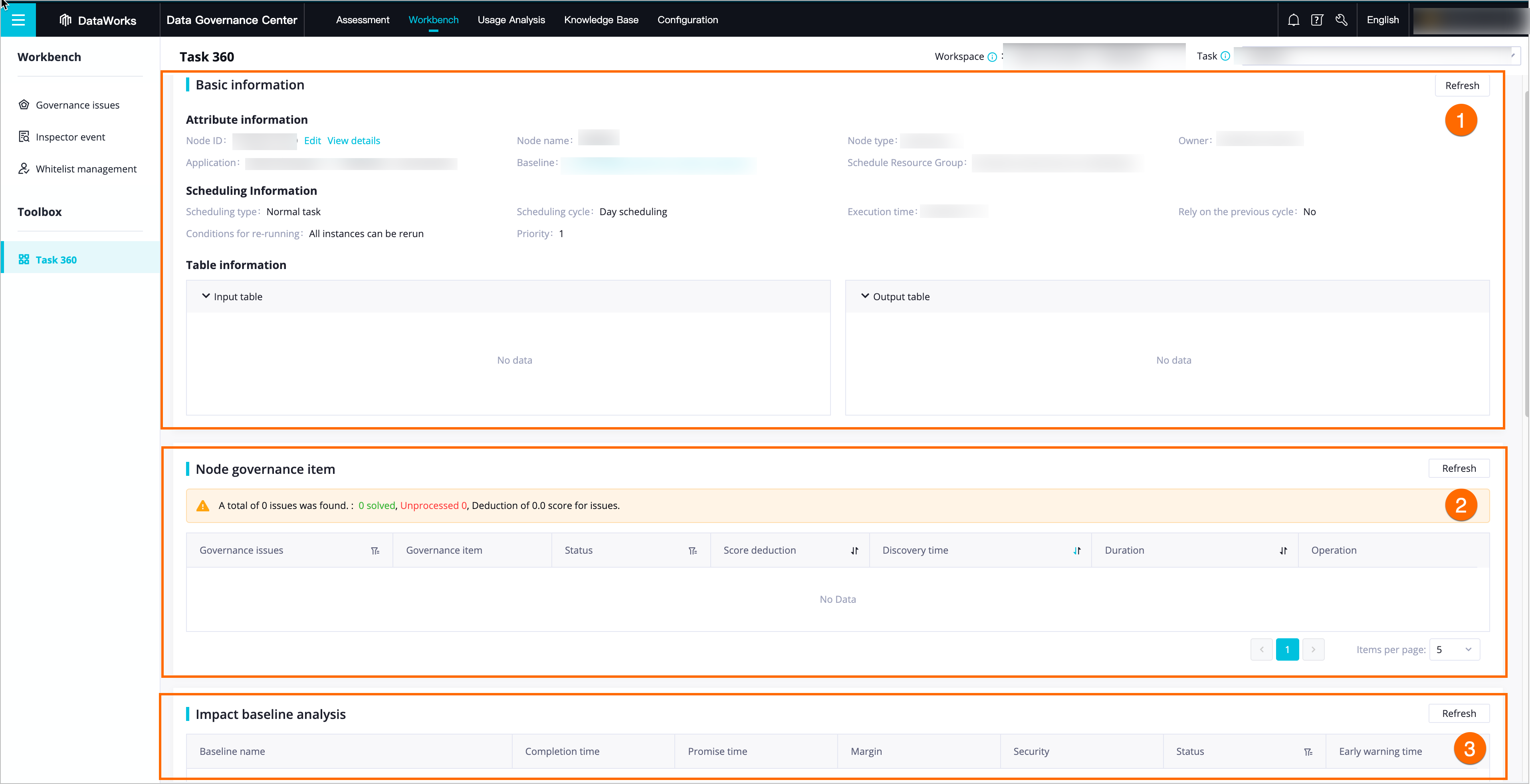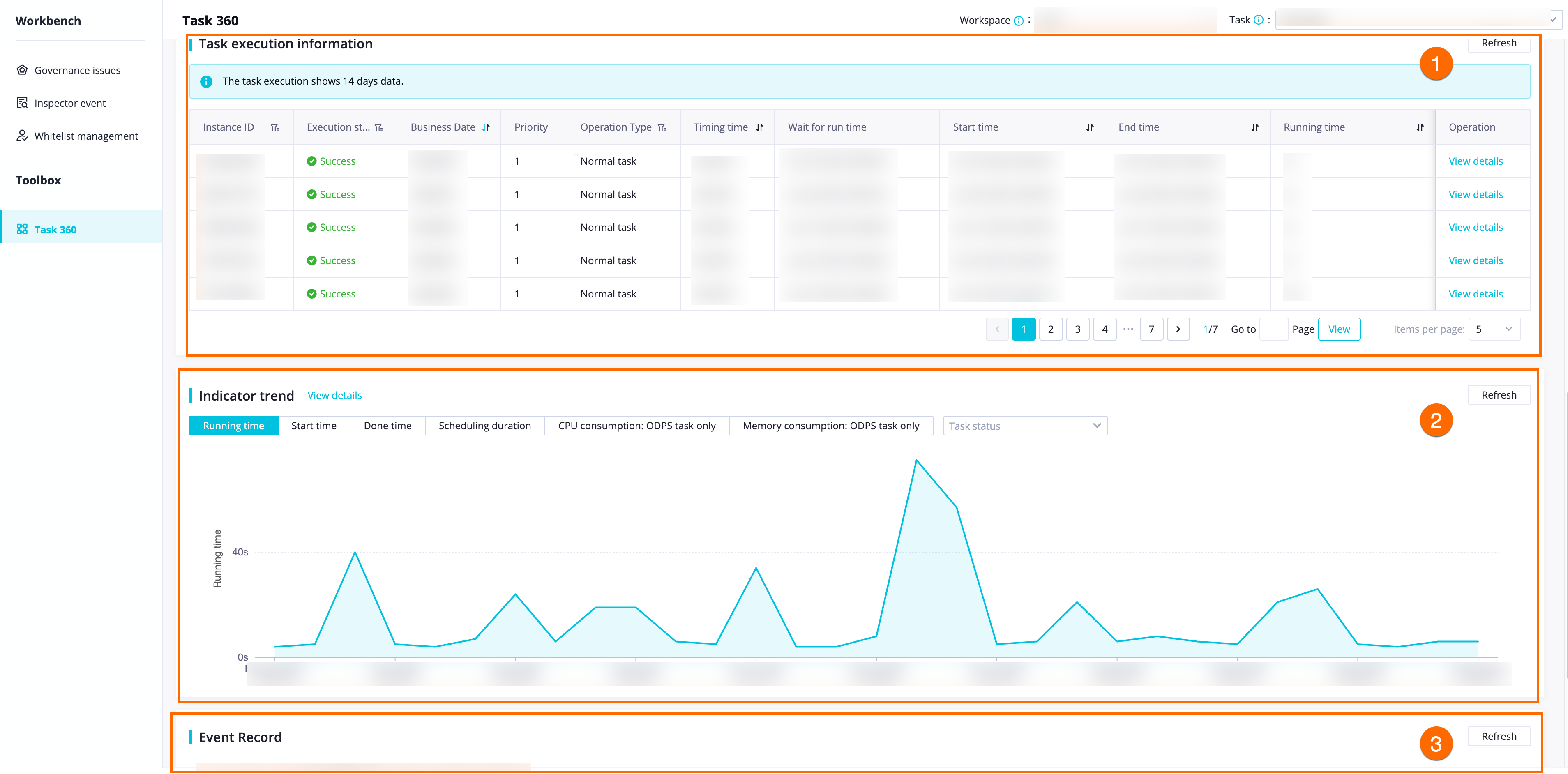You can view the information about a node in the following sections on the Task 360 page of the Toolbox module to obtain a panoramic view of the node: Basic information, Node governance item, Related Baselines, Task execution information, Indicator trend, and Event Record. This topic describes the features that are provided on the Task 360 page.
Obtain a panoramic view of a node
Log on to the DataWorks console. In the left-side navigation pane, choose . On the page that appears, select the desired workspace from the drop-down list and click Go to Data Governance Center.
On the Data Governance Center page, click the Workbench tab. In the left-side navigation pane of the page that appears, click Task 360.
In the upper part of the page, select a workspace from the Workspace drop-down list and select a node from the Task drop-down list. You can also enter the ID of a node in the field to search for the node.
NoteIf you log on to the DataWorks console by using an Alibaba Cloud account or as a RAM user to which the AliyunDataWorksFullAccess policy is attached, you can select any workspace. If you log on to the DataWorks console as a RAM user to which the AliyunDataWorksFullAccess policy is not attached, you can select only workspaces in which you are assigned the Workspace Manager role. For more information about how to attach the AliyunDataWorksFullAccess policy to a RAM user, see User permission management.
On the Task 360 page, view the information about a node in the following sections: Basic information, Node governance item, Related Baselines, Task execution information, Indicator trend, and Event Record.

Area | Description |
1 | The Basic information section displays the basic information of a node. Note
|
2 | The Node governance item section. You can search for governance items by using the filter conditions Governance issues and Status. You can also sort governance items by Score deduction, Discovery time, or Duration.
|
3 | The Related Baselines section. If the current node is an ancestor node of another node in a baseline, the current node affects the data output of the baseline. This section displays all baselines to which the current node belongs and execution details of each baseline on the current day. The details include the baseline name, completion time, and committed point in time. You can click the name of a baseline to go to the Smart Baseline page to view the execution details of the baseline. Note For more information about the intelligent baseline feature, see Overview. |

Area | Description |
4 | The Task execution information section. This section displays the basic information about the instance execution of the current node within 30 days. You can search for node instances by using the following filter conditions: Instance ID, Execution status, and Operation Type. You can also click View details in the Operation column to go to the Cycle Instance page in Operation Center to view details of the instance. |
5 | The Indicator trend section. The X-axis in the trend chart indicates the time at which a node finishes running. You can search for node instances of different types by selecting Running time, Start time, Done time, or Scheduling duration as the Y-axis and selecting a node status. You can click View details to go to the Resource Details page of the Usage Analysis page to view resource consumption of the node. |
6 | The Event Record section. This section displays the operation records of the current node and the governance progress of governance issues for the node. |